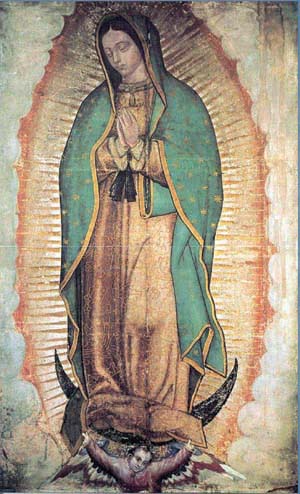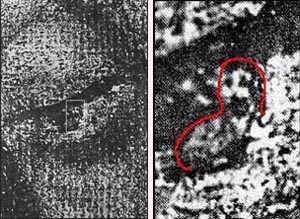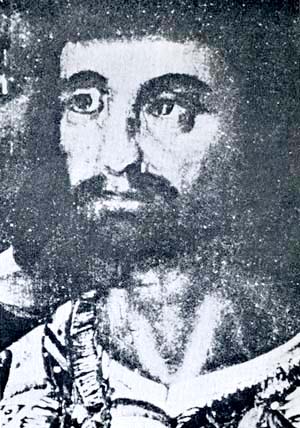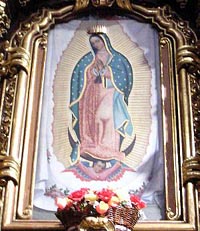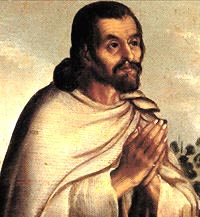 |
| St. Francis at Greccio by Terry Nelson |
Francis set out again on the roads of Umbria. Again he went up the rugged path along the woodlands of Fonte Colombo and joyously greeted the little church so dear to him.
The days that followed were among the happiest of his life. Christmas was drawing near. Pleasant weather had returned, and in the cloister formed by the wooded hills, a clear light shone in the joyful, immaculate mornings. Toward evening, the long slow notes of cornemuses rose from the valley, playing ancient pastorals. Tenderly they dwelled on the miraculous dream of the return of the Son of God to earth as a baby, little and poor, clasped to the breast of the Virgin.
Francis wanted everyone to share in the joy of this "feast of feasts." He wanted the poor and the hungry to sit at the tables of the rich and oxen and asses, the humble beasts who had warmed the cold body of the baby Jesus with their breath, to be given more than the usual amount of grain and hay.
"If I could speak to the emperor," he said, "I would ask that a general law be made requiring all who can to scatter corn and other grains along the roads so that the birds might have an abundance of food on such a great and solemn day, especially our sisters the larks."
A few days before Christmas, Francis sent for a noble of Greccio, acastello nearby, a man Giovanni for whom Francis had a very. special love because of his goodness. To him Francis disclosed the plans he had made.
It would be, he said, so good, so edifying, to call to mind the birth of the Christ Child on the night of Christmas, to have "set before our bodily eyes in some way the inconveniences of his infant needs, how he lay in manger, how, with an ox and an ass standing by, he lay upon the hay where he had been placed." His poetic gifts enabled him to give vivid life to the scene. Giovanni was enthralled.
Brothers from nearby Franciscan places were invited. Many torches and candles were needed to make a great light in that night that has lighted up all the days and years with its gleaming star." Men and women worked unceasingly to prepare them. All had been made ready in the forest by Christmas Eve, the Vigil of Christmas: the manger, the hay, the ox and ass. Francis inspected it and was pleased. At last he had found a way to make a living presentation of the concept in which he passionately believed, in a drama that could not fail to stir even the most stolid. The lowly manger would show forth God - small, poor, humble. Greccio would become a new Bethlehem.
Night fell and obscured the dark beech trees, the steep cliffs, the hermitage, the valley. A profound waiting silence lay over the great stage. Then it began to snow, and there was nothing but an immense whiteness in the calm and peaceful night. It seemed that unseen bells were ringing out the ancient invocation: "Peace on earth to men of good will" In the great, white quiet, every petty, malicious, and unworthy feeling died away.
As the hours passed, far-away lights appeared in the valley and began to move up to the hermitage. Again, as once before, shepherds were walking in the night to "come and adore Him."
In reading over the description written by Thomas of Celano, who certainly got his information from someone who was there, we ourselves can see the marvelous scenes.
A thousand torches blaze up in the darkness, joyous moving lights, like the enchanted lights in a festival of fantasy in legends arising from the deeps of a magic forest. And still it is snowing. A whirlwind of flakes dances in the flickering flames of the torches. Great crackling bonfires add their light and voice to the jubilation of flames that shine out on the harsh and lonely mountain. The night, writes Thomas, is "lighted up like the day."
A great throng crowds about the manger, where the ox and the ass bring the ancient miracle to life again. The people, writes Thomas, are "filled with new joy over the mystery."
From the group of kneeling friars arises the mighty chorus: "Let the heavens be glad and the earth rejoice; let the sea and what fills it resound..." The song rises to the tops of the white oaks on which reflections of the red fires dance; it expands into the invisible sky. It travels to the distant mountains.
Everything proclaims solemnity, beauty, and joy: the priest with the gold chasuble who celebrates the Mass, the altar shining with lights, the brothers in their pure white surplices, the forest ringing with the joyous hymn, the rocks that "make answer to their jubilation." A single harmony unites all things and all creatures - perhaps even the angels who sang on the night that Christ was born are singing again, too, beyond the intense light.
Francis vested as a deacon, sings the beautiful lesson: "She gave birth to her first-born son and wrapped him in swaddling clothes and laid him in a manger..."
His voice rings out like heavenly music that none of those present could ever forget: "a strong voice, a sweet voice, a clear voice, a sonorous voice." The nobleman Giovanni is so overwhelmed by it that as Francis reads, he sees the baby Jesus "lying in the manger lifeless, and ... the holy man of God go up to it and rouse the child as from a deep sleep."
"This vision was not unfitting," writes the friar, "for the Child Jesus had been forgotten in the hearts of many; but, by the working of his grace, he was brought to life again through His servant Saint Francis and stamped upon their fervent memory.
Then Francis preaches to the people, and "he spoke charming words concerning the nativity of the poor King and the little town 6f Bethlehem." Speaking the word "Bethlehem" (Betlemme) says Thomas, his voice seems to resemble the sound of a lamb.
And the light that shines in the darkness is truly the light of the dawn, the beginning of a new day for all who were there - that light that touches the faces, envelops the motionless plants, reaches into the snow-covered valley and up to the icy heights that still echo with the sound of silvery voices: Rejoice! Rejoice!



